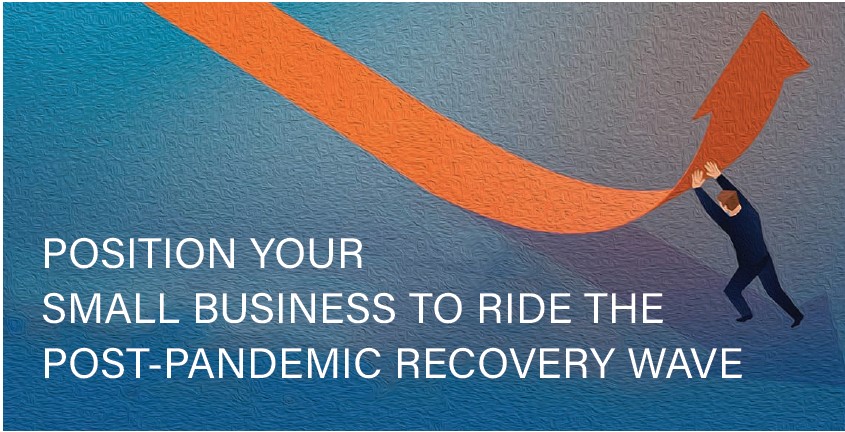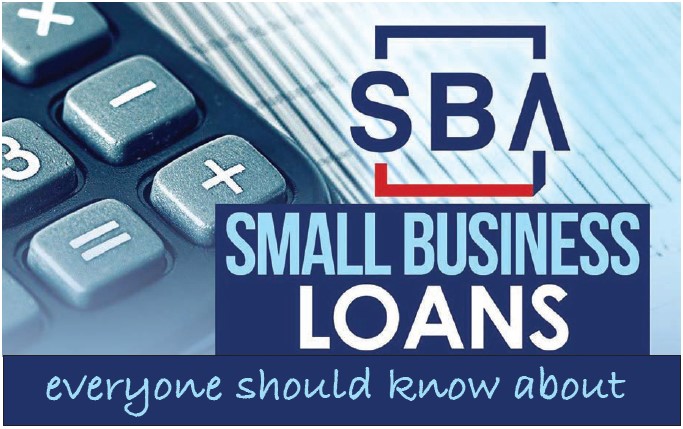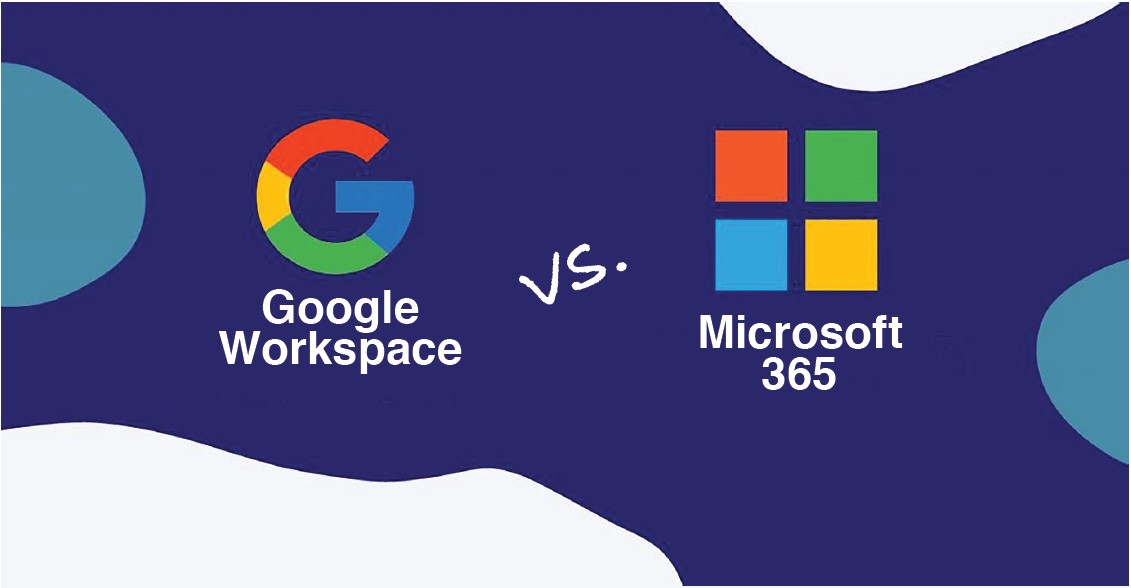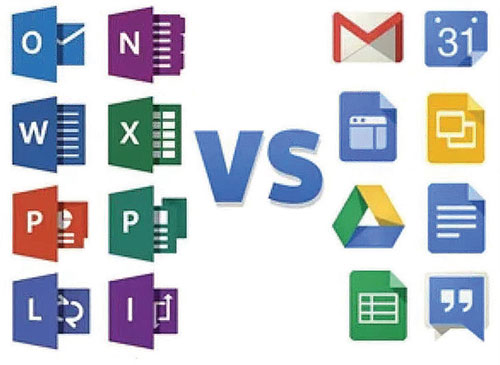Position your small business to ride the post-pandemic recovery wave

By Yrene Luque
As Utah’s small businesses transition from “survival mode” to the post-pandemic “new normal,” the opportunities are looking bright. It’s a great time for many business owners to begin planning the next steps to thrive and grow in the coming months.
 In Utah, 99 percent of firms are small businesses — and they really are the lifeblood of our economy. They create jobs. They give our neighborhoods their unique flavors. And they bring our communities together.
In Utah, 99 percent of firms are small businesses — and they really are the lifeblood of our economy. They create jobs. They give our neighborhoods their unique flavors. And they bring our communities together.
Despite the challenges of 2020, Utah’s small businesses have shown incredible resilience through the pandemic. They’ve reinvented themselves and reimagined ways to safely serve customers. In fact, 71 percent of Utah small businesses report they are operating at or above their pre-pandemic capacity, according to the Census Bureau’s most recent Small Business Pulse Survey.
Small businesses have also shown up for their communities in amazing ways, from giving free meals for healthcare workers to donating supplies for students learning at home. The good news is that now Utahns are ready and able to show up for small businesses. Freshly vaccinated or soon to receive a shot, more of us are ready to drop by the dry cleaner, call the travel agent or go back to the bowling alley.
Small businesses are feeling optimistic. The most recent Small Business Pulse Survey also reports:
• Almost half (48.8 percent) of Utah small businesses have fully recovered or expect to be fully recovered by mid-July.
• 44.5 percent of these businesses are already operating at pre-pandemic levels.
• Another 20 percent of small businesses expect to return to normal within six months.
As small-business owners transition to a brighter future, they can take five steps to position themselves for success and growth:
1. Learn about different sources of capital available as you prepare to meet increased consumer demand.
The U.S. Small Business Administration’s Paycheck Protection Program offered a lifeline to small businesses through forgivable loans that helped them retain workers and keep their doors open during the COVID-19 pandemic. For instance, Zions Bank approved 16,645 Utah loans in 2020 and in 2021 that preserved payrolls for tens of thousands of workers — a testament to the resilient spirit of the Beehive State’s entrepreneurs.
Now, with a major economic rebound expected and PPP funds largely exhausted, it’s wise for small-business owners to educate themselves on additional sources of capital, including SBA 7(a) loans, business lines of credit and other SBA programs.
The 7(a) loan is one of the most versatile options offered by the SBA. This loan’s maximum amount is $5 million and is frequently used for business acquisitions, working capital, debt refinance or to purchase furniture, fixtures and supplies. With the boom in construction, many companies are also using 7(a) loans for equipment purchases.
A business line of credit can help buffer companies from unexpected challenges or cashflow issues. Borrowers may withdraw funds up to their approved limit and they are only charged interest for the amount withdrawn. After making repayments, the funding becomes available again.
The SBA administers other programs to help businesses reeling from the effects of the pandemic. The COVID-19 Economic Injury Disaster Loan (EIDL) is a direct loan through the SBA that helps businesses meet operating and other expenses. Funding is available for loans up to $500,000 and businesses may apply even if they already received a PPP loan. However, funds from both loans cannot be used for the same purpose.
The SBA’s Restaurant Revitalization Fund provides eligible businesses with funding equal to their pandemic-related revenue loss, up to $10 million. If recipients use the funds for eligible expenses — such as payroll and rent — before March 11, 2023, they will not be required to repay the funding. Businesses may apply at restaurants.sba.gov.
The Shuttered Venue Operators Grant program allocates $16 billion in funding for live venue businesses that had to close during the pandemic. Applicants may apply if they were in business as of Feb. 29, 2020, and funds may be used for expenses such as payroll, rent and production expenditures. Businesses may apply at www.svograntportal.sba.gov/s/.
2. Continue innovations and partnerships that emerged in the pandemic. Small businesses demonstrated they could be agile during the past year. The adoption of new innovations, ramping up of e-commerce, digitization and automation should continue. While these upgrades can be costly, they can provide a competitive advantage. Contactless payment and fulfillment solutions will continue to be attractive to consumers. Our business environment is changing, and the better companies can position themselves to roll with the changes, the better shape they will be in.
It may also make sense to nurture partnerships that may have emerged during “survival mode.” An example is an ice cream shop that had to close a few days a week during the pandemic. They were creative and formed a new alliance with a restaurant, which started serving their paletas. They were a big hit at the restaurant, which led to additional restaurant locations offering the product.
3. Commit to keeping good records. The PPP process showed the importance of keeping good records. Business owners will want to make sure their income statement, statement of cash flow, cash flow forecasts, payroll records and tax documents are up to date. These records were critical in determining how much a business could borrow through the PPP. Even though the program is over, it makes sense to keep business paperwork organized. Keeping documents in order will help business owners better predict cash flow and future expenses.
4. Invest in your workforce. If the pandemic taught us anything, it was that we may find we have to cover the tasks of our colleagues. In a challenging labor market, small-business owner can focus on their existing workforce and invest in upskilling and cross-training them. Employees need to understand the value they contribute (or should be contributing) to a small business. At the same time, many employers may need to recruit new workers with new skills to enhance their existing team and help you scale up the workforce. A business is only as good as the people operating it. Employers can make sure they have a well-trained, productive staff and address any weak links.
5. If you haven’t already, cultivate a strong relationship with a banker. Many business owners, particularly in the early weeks of PPP, found it advantageous to have an existing relationship with a banker. Bankers who knew their client’s business model and structure helped support them through the process. A banker can help serve as an advocate for their business client during the underwriting process. They can help small-business owners meet credit requirements and successfully apply for capital.
It’s been a challenging time for many small businesses, but there is light at the end of the proverbial tunnel. The Conference Board Consumer Confidence Index recently surged in April to its highest reading in 14 months. As more people become fully vaccinated against COVID-19, consumer spending will also return to normal levels. Locking down your capital needs will help position your business for success in the post-pandemic economy.
Yrene Luque manages Zions Bank’s Business Resource Center, which provides tools and resources for those interested in starting or expanding their businesses.
Small Business loans everyone should know about

By Ryan H. Jones
Utah business is looking up post-pandemic. According to The Enterprise, three in five Utah small businesses have fully recovered or expect to be fully recovered by September and 40 percent have already returned to pre-pandemic levels.
 That said, it doesn’t mean small-business owners aren’t going to be on the lookout for new and additional business loans. Whether just starting a business or looking to expand, there are several different Small Business Administration (SBA) loan programs to help meet a variety of needs — from purchasing heavy machinery to providing working capital to grow.
That said, it doesn’t mean small-business owners aren’t going to be on the lookout for new and additional business loans. Whether just starting a business or looking to expand, there are several different Small Business Administration (SBA) loan programs to help meet a variety of needs — from purchasing heavy machinery to providing working capital to grow.
Some of the most common and widely used loan options are SBA 7(a) loans and SBA 504 loans. Here’s what you need to know:
SBA 7(a) Loans
The SBA designed SBA 7(a) loans to assist small-business owners in obtaining funds to help their businesses with working capital, real estate purchase, inventory and equipment purchase, debt restructure and business acquisition.
SBA 7(a) loans are guaranteed by the SBA by a portion of the amount borrowed. Loans are limited by capping interest rates and loan fees. Borrowers can apply for a 7(a) SBA loan by working directly with an SBA lender and the guarantee from the SBA helps businesses acquire funds, even if they otherwise would not qualify for a conventional product.
Popular Types of SBA 7(a) Loans:
1. Standard and small 7(a) term loans.
• Standard loans max out at $5 million; small loans max out at $350,000.
• The SBA guarantees 85 percent of loan up to $150,000 and 75 percent of loans greater than $150,000.
• Interest rate may be fixed or variable but is capped.
• Terms are up to 10 years for non-real estate and up to 25 years for real estate loans.
• These loans fully amortize with no balloon payments.
• Guarantee fees and lender fees can be financed with loan proceeds.
• These loans can be used for permanent working capital, inventory and equipment purchase, debt refinance, tenant improvements, business acquisition and real estate purchase.
• All available collateral will be required to be pledged until the 7(a) is fully collateralized.
2. SBA Express loans.
• These loans max out at $350,000. On Oct. 1, 2021, they will be permanently changed to $500,000.
• The SBA will guarantee up to 50 percent of the loan.
• These loans are lines of credit or term loans designed for businesses that need a short turnaround.
• Can be used as a revolving line of credit for up to seven years with maturity extensions permitted at the outset.
Lenders may use their existing collateral policy for Express loans.
3. SBA Export Express loans.
• Similar features of the SBA Express loan.
• This program is for exporters who need lines of credit.
• This also has an expedited turnaround time.
4. CAPlines.
• CAPlines follow the general outline of the Standard 7(a) loans.
• The SBA will guarantee 75 percent of the loan.
• CAPlines extend lines of credit to meet short-term and cyclical working capital needs. This is not a term loan and required to revolve like a line of credit.
• CAPlines last for up to 10 years and are designed to help with general and builder contracts, seasonal resources and recurring working capital needs.
Who Qualifies for an SBA 7(a) Loan?
There is a list of requirements that a business must meet in order to qualify but some of the larger qualifications are that businesses must be defined as a small business by the SBA and operate in the United States. The size standards are measured by number of employees or annual revenue, depending upon the industry in which the business operates. Businesses must also have attempted to use other financial resources such as a conventional loan before applying for an SBA loan. Borrowers are encouraged to start working directly with their SBA lenders to verify if they qualify for an SBA loan.
Most for-profit types of small business are eligible for an SBA 7(a) loan except for businesses that deal with illegal activities, gambling and any kind of investment or lending activity. Nonprofits, charities and religious groups are not eligible.
IMPORTANT NOTE: Temporary modification to the 7(a) program until Sept. 30, 2021: On Jan. 27, the SBA issued a notice modifying the 7(a) loan program due to the Economic Aid Act, including temporary higher guaranty percentages and fee reductions on eligible 7(a) loans, and an increase in the maximum SBA Express loan amount. 7(a) loans approved through Sept. 30, 2021, are increased up to 90 percent guarantee and SBA guaranty fee is reduced to zero subject to the availability of funds. Express SBA loans are also increased to $1 million through Sept. 30. Maximum loan amount cannot exceed $4,166,666 in order to receive a 90 percent guarantee.
SBA 504 Loans
SBA 504 loans are designed to support a community’s economic growth development. They offer financial support for acquiring fixed assets for expansion or modernization, such as equipment or real estate.
The maximum amount that can be granted is $5 million to $5.5 million depending on the business’ project. The most common structure for a 504 loan is the 50 percent, 40 percent, 10 percent way. This means that 50 percent of the costs are financed by a financial institution, 40 percent are financed by the SBA and the borrower provides a 10 percent down payment.
Who Qualifies for an SBA 504 Loan?
Similar to a 7(a) loan, there is a list of qualifications that must be met and a business must operate as a for-profit entity that operates in the United States and meets the SBA size guidelines for a small business. Those guidelines are defined as a company having tangible net worth of less than $15 million and an average net income of less than $5 million after federal income taxes for the two years leading up to the application. A business must also have qualified management experience; a business plan that’s been deemed feasible; not be engaged in nonprofit, passive or speculative activities; and must show good character with the ability to repay the loan.
IMPORTANT NOTE: Temporary modification to the 504 program until Sept. 30, 2021: The SBA has offered fee reductions for new 504 loans approved from Dec. 27, 2020, through Sept. 30, 2021. These reductions waive 0.5 percent Third Party Lender Participation Fee on loan in senior lien position in 504 project and waive 1.5 percent CDC processing fee (in debenture pricing.)
With favorable interest rates, now may be an ideal time for Utah business owners to consider an SBA loan. Contacting a local financial institution is the fastest and easiest route to take when beginning to explore your options to ensure you choose what is best for you and your small business.
Ryan H. Jones is the executive vice president and chief lending officer at Alta Bank in American Fork. With 18 years of banking experience, he is a member of the bank’s Executive Management Committee.
Accounting for the PPP loan and related forgiveness

By Mike Bullock& Ray Chipman
As many small businesses have received Paycheck Protection Program (PPP) loans and forgiveness, the question of how to account for this assistance is top of mind. The chances are that you have already finalized your 2020 financial statements. However, many small businesses are working toward PPP loans forgiveness. Understanding the various accounting options available will make for seamless preparation of 2021 year-end financial statement reporting.
General Information about PPP Loans
 PPP loans are administered by the Small Business Administration (SBA) and are disbursed by banks for potentially forgivable loans to support eligible small businesses impacted by COVID-19. The loans have a two- or five-year term and bear interest at 1 percent. The PPP’s purpose is to help with payroll and operating costs for entities that have experienced business disruption caused by the COVID-19 pandemic. The principal and interest may be eligible for complete forgiveness if the funds are utilized correctly and certain eligibility and forgiveness criteria are met.
PPP loans are administered by the Small Business Administration (SBA) and are disbursed by banks for potentially forgivable loans to support eligible small businesses impacted by COVID-19. The loans have a two- or five-year term and bear interest at 1 percent. The PPP’s purpose is to help with payroll and operating costs for entities that have experienced business disruption caused by the COVID-19 pandemic. The principal and interest may be eligible for complete forgiveness if the funds are utilized correctly and certain eligibility and forgiveness criteria are met.
Accounting for PPP Proceeds and Forgiveness
Accounting for PPP loans consists of four main options for public, private and not-for-profit entities:
Option 1: Loan. The legal form of a PPP loan is debt; therefore, it is appropriate for businesses that receive such a loan to account for it as debt under Accounting Standards Codification (ASC 470), regardless of whether it expects the loan to be forgiven.
Under ASC 470, a business would recognize a liability for the full amount of PPP proceeds received and accrue interest over the term of the loan. If any of the loan is ultimately forgiven or paid off, the loan and related accrued interest will be removed when notice of the loan forgiveness has been received from the SBA.
For cash flow purposes, any amounts forgiven according to this option should be disclosed as a noncash financing activity.
Summary: If accounting for the PPP loan and forgiveness following the U.S. Generally Accepted Accounting Principles (GAAP) guidance for debt:
• Recognize the liability and accrue interest according to loan terms.
• Any amount forgiven is recorded as gain from extinguishment/forgiveness of debt once legally released from being the primary obligor.
• Gain from forgiveness is presented on its own line in the income statement as other income or operating income (since location is not specified by GAAP).
• Cash flow treatment: Receipt of the PPP loan proceeds would be recorded as cash from financing activities and any amounts forgiven would be disclosed as a noncash financing activity.
Option 2: Government Grant (IFRS model). Small businesses may account for the forgivable PPP loan as, in substance, a government grant that is earned if the entity is compliant with the PPP eligibility and loan forgiveness criteria. Accordingly, business entities will need to determine the appropriate accounting treatment similar to other guidance since GAAP is not available (i.e., IAS 20). International Accounting Standards (IAS) 20, the IFRS accounting standard on accounting for government grants, includes an accounting framework for forgivable loans. Another similar guidance for contributions received by not-for-profits is ASC 958-605 (see Option 3).
Under this option, PPP proceeds received would be accounted for as an income grant. A deferred income liability would be recognized when forgivable loan proceeds are first received if a business determined that there is “reasonable assurance” that it will meet the conditions for forgiveness of the entire loan amount. The deferred income liability would be recognized in income on a systematic and rational basis over the periods in which the business incurs the eligible expenses to which the grant relates.
If a business elects to account for PPP proceeds as a government grant, it will need to continually reassess its ability to meet the complete forgiveness conditions. If the entity can no longer support a conclusion that it expects to meet the conditions, it may have to reverse income that has previously been recognized.
Summary: If accounting for the PPP loan and forgiveness following government grant IFRS model (IAS 20):
• Recognize the deferred income liability.
• Recognize income and relieve deferred income liability on a systematic and rational basis according to recognition of eligible expenses.
• Continually reassess ability for complete forgiveness; potentially reverse income if forgiveness conditions are not met.
Option 3: Government Grant (FASB model) — Not-for-profit. If a not-for-profit (NFP) organization expects to meet the PPP’s eligibility criteria and chooses not to follow the loan model in Option 1, and if the NFP concludes that the PPP loan represents, in substance, a grant that is expected to be forgiven, it should account for such PPP loan as a conditional contribution (refundable advance) in accordance with FASB ASC 958-605. If contributions are conditional, the contribution is not recognized until the conditions are substantially met or explicitly waived.
The scope of FASB ASC 958-605 excludes contributions made by governmental entities to business (for-profit) entities; however, the FASB staff has acknowledged that entities scoped out of that guidance are not precluded from applying it by analogy when appropriate. Therefore, per ASC 958-605, the timing of recognition for a contribution received will depend on whether the contribution is conditional or not.
Summary: If a not-for-profit organization chooses to account for the PPP loan and forgiveness as a conditional contribution (in substance, government grant) following ASC 958-605:
• Recognize the proceeds as a refundable advance (liability).
• Reduce the refundable advance and recognize contribution revenue once the conditions of release have been substantially met or explicitly waived.
Option 4: Gain Contingency Model. A small business may approach recording the PPP loan analogous with gain contingency guidance. Which, in the GAAP, is not recognized in the operating system until forgiven or paid. As applied to forgivable loans received under the PPP, a business would initially record the cash inflow from the PPP loan as a liability. The proceeds from the loan would remain recorded as a liability until the grant proceeds are realized or realizable, at which time the earnings impact would be recognized.
Summary: If an entity chooses to account for the PPP loan and forgiveness as a gain contingency:
• Proceeds would be recorded as a liability until the gain is realized or realizable.
• A contingency that might result in a gain usually should not be reflected in the financial statements because to do so might be to recognize revenue before its realization — ASC 450-30-25.
If you have or are anticipating receiving a PPP loan within the year, reflect on these options and consult a CPA before proceeding to finalize your financial statements. Frequently evaluating your options to determine the best solution for your business will result in a simplified financial reporting experience for your 2021 year-end financial statements.
Mike Bullock is an audit manager at Squire, a full-service accounting firm with offices in Orem and Salt Lake City. Ray Chipman is a CPA and certified internal auditor at Squire.
Rural County Grant Program supports economic development efforts
The Business Services Team, a part of the Utah Governor’s Office of Economic Development (GOED), has begun offering a unique program that empowers rural county governments to take responsibility for their economic development planning, projects and activities.
The Rural County Grant Program encourages counties of the third, fourth, fifth, or sixth class designations — basically those with smaller populations and lower assessed property valuations —to apply for the grant to manage their unique economic development opportunities. The program addresses business recruitment, workforce training and development, infrastructure and capital facilities improvements and other specific county needs.
“The Rural County Grant Program encourages local county governments to take control of their destiny by carefully selecting projects that deliver the most economic opportunity for their county,” said Ryan Starks, managing director of GOED’s Business Services team.
The team’s web page cites three examples of rural counties using the Rural County Grant Program funds to make a difference in the lives of residents.
Box Elder County
Box Elder County commissioners, with the recommendations of the County Economic Development Board, utilized their $95,000 in grant funding to distribute sub-grants to businesses. It opened applications in January and February this year and received 38 applications. Eight businesses were awarded sub-grants.
“The money was distributed mostly to manufacturing companies to help them purchase new equipment,” said Mitch Zundel, economic development director for Box Elder County. “Because of the new equipment, they either diversified into new avenues or did projects where they could continue to innovate and expand. Box Elder County and the recipients are very grateful for the Rural County Grant Program and the ability to get these projects off the ground.”
San Juan County
San Juan County directed its Rural County Grant Program grant money through its County Economic Development Board, using data to use the funding effectively.
“Our board had good data on what would benefit the county and made the awards based on need, the number of jobs the grant might create and the types of projects that would benefit our entire area,” said Stuart Smith, communication specialist for San Juan County Economic Development and Visitors Services.
Britt Barton, chairman of the Community Economic Development Board, commented on two healthcare organizations’ purchases with grant funding. “One was for equipment to do home dialysis and the other was an oxygen generator that makes our area less dependent on the supply chain that starts in Grand Junction. These types of purchase elevate the quality of life for all of our residents,” Barton said.
Wasatch County
According to Dallin Koecher, executive director of Heber Valley Tourism and Economic Development, the Rural County Grant Program helped two towns in Wasatch County accomplish two primary objectives centered around downtown revitalization and investing in research.
“First, we wanted to help both Heber and Midway initiate downtown revitalization projects,” said Koecher. Both cities were looking to create new economic growth in their respective downtown areas. Heber could pay for a study to create a Community Reinvestment Area to use tax increment financing to reshape and renew the downtown using Rural County Grant Program funds.
In Midway, the town used the funds to focus on ways to enhance the walkability and charm of the downtown area. Working with city administrators and elected officials, Midway used the Rural County Grant funds to renovate two additional retail spaces on their town square.
“Our second goal was to invest in research, data and training to improve our economic development efforts,” said Koecher. He noted that good data could help the county make informed decisions and improve our community targeted areas that need it most.
“The Rural County Grant opened up many possibilities for Wasatch County to do economic development in a way that is best for us,” said Koecher. “When economic opportunities come to light in the community, it is great to know that we now have means to make these priorities happen.”
Google Workspace vs. Microsoft 365: What's the best collaboration tool for your small business?

By Bahar Ferguson
When it comes to connecting with your team, staying organized and keeping your business running smoothly, there are two main technology options: Google Workspace (formerly known as G Suite) and Microsoft 365 (formerly known as Office 365).
 Google Workspace and Microsoft 365 offer many of the same features, including cloud storage and file-sharing options; a selection of apps designed to help you run your business; collaboration tools like chat, audio and video calls; and business email.
Google Workspace and Microsoft 365 offer many of the same features, including cloud storage and file-sharing options; a selection of apps designed to help you run your business; collaboration tools like chat, audio and video calls; and business email.
Some people have very strong opinions about which one they prefer, but many are on the fence and confused about the differences between the two platforms. If you fall into the latter camp but need to make a decision, keep reading. Outlined below is a comparison between Google Workspace and Microsoft 365 for you to keep in mind as you determine the best platform for you and your team.
Google Workspace: The Basics
Google Workspace provides users with access to cloud storage (plans range from 30GB up to unlimited storage) and robust file-sharing capabilities. You can use Google Workspace to collaborate on a variety of documents in realtime. You can also make projects available for offline editing.
With Google Workspace comes access to a variety of popular Google apps, many of which you and your team likely already uses. Some of the most well-known apps include Gmail, Google Docs, Google Sheets, Google Slides, Google Calendar and Google Keep.
Google Workspace also provides access to Google Sites. Google Sites features a drag-and-drop-style interface that allows you to quickly create team websites.
On the collaboration front, Google Workspace offers both Chat, which is good for messaging with your team, and Google Meet, which allows for easy and secure video conferencing.
 Google Workspace is popular among remote teams because it is cloud-based and allows for easy collaboration. Apps like Calendar and Keep also make it easy to create tasks and establish timelines for different projects.
Google Workspace is popular among remote teams because it is cloud-based and allows for easy collaboration. Apps like Calendar and Keep also make it easy to create tasks and establish timelines for different projects.
Microsoft 365: The Basics
Microsoft 365 comes with several different plans, each of which provides users with 1TB of storage. Each plan also provides an additional 50GB of storage towards each user’s mailbox. There is no unlimited storage option for Microsoft 365, but that’s not a problem for most people.
Microsoft 365 includes OneDrive, which is used for easily managing and sharing files. The platform offers several other web-based apps, including Microsoft Word, Microsoft Excel, Microsoft PowerPoint, Outlook, OneNote, Publisher and Access (available on PC only).
Microsoft 365 also offers a variety of high-quality collaboration tools, including Microsoft Teams, which allows users to transition easily from chat to video conferencing. Microsoft 365 also makes it easy for users to share files; edit in realtime; and leave comments, suggestions and more.
Google Workspace v. Microsoft 365: A Closer Look
Now that we’ve addressed the basic features each platform offers, let’s take a closer look at how Google Workspace and Microsoft 365 compare when it comes to the following:
Ease of Use. The good news is that most people find that both Google Workspace and Microsoft 365 are relatively easy to use. If you work in an office environment, there’s a good chance you’ve used at least some of the apps included in these platforms, so you already have a leg up when it comes to figuring out how to use them.
In general, the platform that you find easiest to use will vary depending on your personal preferences and your day-to-day workflow.
Do you prefer to work on a desktop computer? If so, you might find that Microsoft 365 is a better choice. All of the apps integrate with each other and are a bit more efficient on a desktop than on a mobile device.
For those who are already used to or enjoy using Microsoft apps, you’ll likely be more impressed with Microsoft 365.
On the other hand, though, beginners should keep in mind that the apps are very feature-heavy. This can make them intimidating or overwhelming for newbies.
Google Workspace has a very intuitive, easy-to-use interface. This makes it extra inviting and less intimidating for beginners.
Google Workspace also includes a variety of behind-the-scenes features, including auto-save. These kinds of features make the platform more user-friendly, especially for remote workers who are trying to get things done on their own and can’t pop by their neighbor’s desk to ask a quick question.
Personalization. Both Google Workspace and Microsoft 365 offer a variety of customization options for users.
For example, you can use either platform to create a custom-branded email address for your business. All you have to do is purchase a domain (or use your existing business domain) and connect it to the platform using the intuitive setup wizard.
Both platforms also give you access to a variety of calendar and scheduling tools, so it’s easy for you and your team to stay organized, create workflows that work well for your specific needs and keep up with each other from afar.
As you can see, when it comes to personalization, Google Workspace and Microsoft 365 are quite similar. However, Microsoft 365 may have a slight advantage over Google Workspace simply because the platform’s apps come with a more diverse collection of features.
With so many different tools, it’s a bit easier to customize your workflows to suit your needs, eliminate guesswork and ensure nothing falls through the cracks.
Pricing. For many people, pricing is the most important factor to consider when choosing between different platforms.
Fortunately, Google Workspace and Microsoft 365 are both relatively affordable. Microsoft 365’s pricing plan is a bit more complex than Google Workspace’s plan, though.
Google Workspace plans:
• Business Starter: $6 per user per month.
• Business Standard: $12 per user per month.
• Business Plus: $18 per user per month.
• Enterprise: Currently listed as “call for pricing,” formerly $25 per user per month. Call or ask your IT partner for updated information.
All Google Workspace Plans include access to the following features:
• Gmail for business.
• Meet for video conferencing and voice conferencing.
• Chat for secure messaging.
• Shared calendars.
• Google Docs, Google Sheets, and Google Slides.
• Keep for shared notes.
• Forms for survey building.
• Sites (website builder).
• Currents (the new replacement for Google+).
• A minimum of 30GB of Google Drive storage.
• Extensive security and admin controls.
The Google Workspace Business Premium and Enterprise plans both include significant increases in cloud storage. They also add eDiscovery and email options, plus the ability to limit user access based on geographic regions.
Microsoft 365 Plans:
• Microsoft 365 Business Basic: $5 per user per month.
• Microsoft 365 Apps: $8.25 per user per month.
• Microsoft 365 Business Standard: $12 per user per month.
• Microsoft 365 Business Premium: $20 per user per month.
• Office 365 E1: $10 per user per month.
• Office 365 E3: $20 per user per month.
• Office 365 Enterprise E5: $35 per user per month.
All of the Microsoft 365 plans provide you with either a series of cloud-based features, the option to download and install Microsoft Office desktop apps onto up to 15 devices for each user (five Windows PCs or Macs, five tablets and five smartphones), or both. Desktop apps include Outlook, Word, Excel, PowerPoint and OneNote.
Cloud-based services include Exchange Online email hosting (with maximum inbox size of 50 or 100GB); web-based versions of Word, Excel, PowerPoint and Outlook; a minimum of 1TB of OneDrive storage per user; SharePoint online team sites; HD video conferencing; Online meetings (either Skype Meeting Broadcast or Microsoft Teams live events); secure messaging and collaboration via Microsoft Teams; and security and administrative controls.
All Microsoft 365 business plans include appointment-scheduling and expense-tracking software. Enterprise plans, on the other hand, include team-based task management software, advanced analytics, process management tools and additional collaboration software.
If none of Microsoft’s plans suit your team’s specific needs, you can also mix and match individual services to create your own custom plan.
Storage. Both Microsoft 365 and Google Workspace offer storage options that will be adequate for most users. However, when it comes to sheer storage volume, Microsoft 365 wins hands-down. Remember, the default storage for Microsoft 365 is 1TB. Upgrade Google Workspace accounts get this much storage, but basic accounts get a mere 30GB per user.
Depending on the nature of your work, you might be able to get by just fine with a smaller amount of storage. If you care more about extensive storage and are willing to pay a bit more money per user per month to get it, though, Microsoft 365 will likely be a better choice for you and your team.
Collaboration. For teams to function well, especially if some or all of your members are working remotely, you need a platform that supports effective collaboration. Luckily, Google Workspace and Microsoft 365 are very similar when it comes to communication and collaboration tools.
Both platforms offer video conferencing tools, for example, as well as features for voice calls and chat. When it comes to editing documents and collaborating on various projects, though, many teams prefer Google Workspace over Microsoft 365.
All of the apps available through Google Workspace (Docs, Sheets, etc.) are easy to use, whereas some people feel that Microsoft 365’s apps are more complicated or overwhelming because they come with so many features.
Which Should You Choose?
Now that you know more about the Google Workspace versus Microsoft 365 debate, where do you stand?
For those whose top priority is collaborating on documents, Google Workspace may likely provide more bang for your buck. It offers robust live collaboration features and makes it easy for you and your team to work together, even when everyone is doing business remotely.
If you’re looking for a more sophisticated option with more features, Microsoft 365 is likely going to be the better choice. It offers a vast array of applications and still allows you and your team to collaborate with relative ease.
Keep this breakdown in mind and you’ll have no trouble choosing the right platform that helps you and your team get more done.
Bahar Ferguson is president of Wasatch I.T., a Utah provider of outsourced IT services for small and medium-sized businesses.
Suazo Business Center opens second office to serve Ogden community
The Suazo Business Center, a nonprofit business resource organization with a mission of development and empowerment of the Latino/Hispanic and other underserved communities, has opened a second location in Ogden. The organization, founded in 2002, is headquartered in Salt Lake City.
The Ogden Center was established in a partnership with Weber State University and Ogden City. Ogden is the home of the Utah’s most diverse population outside of Salt Lake County. Nearly 39 percent of Ogden City’s population identify as minority, and information from the Census Bureau and the Kem C. Gardner Policy Institute at the University of Utah report white households in Utah bring in nearly 30 percent more in annual income than Hispanic families and the success of minority entrepreneurs reflects that disparity, Suazo Business Center officials said.
“The success rates of minority entrepreneurs are not in line with overall small-business development, however, as they are at a disadvantage regarding many areas critical to business achievement,” a center news release said. As a response to these barriers to success, Suazo officials said they are going to the heart of the issue and working to assist northern Utah small businesses by opening the Ogden location.
“Entrepreneurship is a vehicle that can effectively curb the income gap for underserved communities in our state. We see this on a daily basis at our center,” said Silvia Castro, Suazo Business Center’s executive director. “The Suazo Center was created to provide minority business owners, and other underserved entrepreneurs, the resources necessary to start or grow their businesses, increase their earning potential and wealth and help to end pandemic cycles of poverty. As these amazing entrepreneurs succeed, it becomes an all-around win for Utah and our local communities.”
The Ogden center, located at 2036 Lincoln Ave., opened earlier this month.
The Suazo Business Center has assisted in the education, growth and development of well over 10,000 clients since its founding, Castro said. It has created over 5,000 new small businesses and have helped generate over $250 million in revenues within the community it serves.







